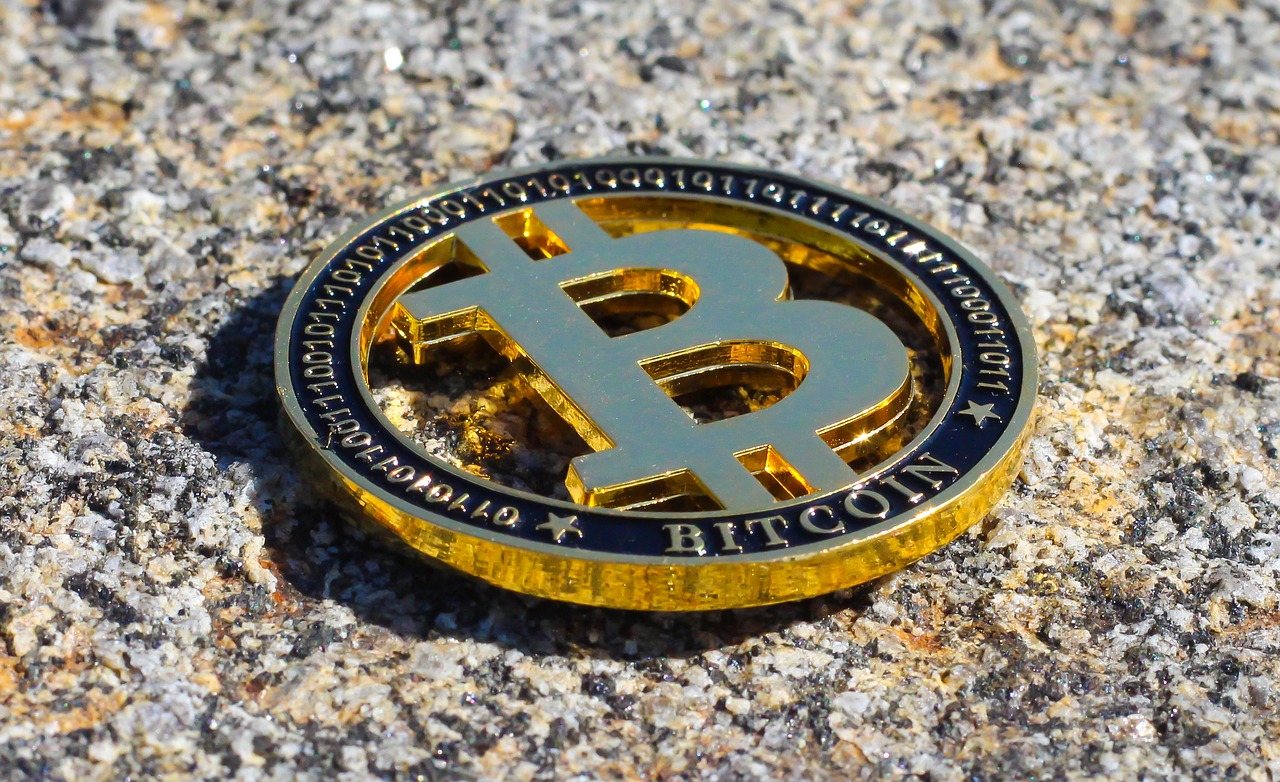The Future of Cryptographic Regulation and Market Responses
The world of cryptocurrency is a fascinating blend of technology, finance, and innovation, but it’s also a realm that is constantly evolving. With the rise of digital currencies, the need for effective regulation has never been more pressing. As we look into the future, it’s essential to understand how regulatory frameworks are being shaped and how they will impact the market. This article explores the dynamic interplay between cryptographic regulation and market responses, shedding light on how various stakeholders are adapting to the shifting landscape.
New regulations are shaping the future of cryptocurrency. Across the globe, governments are recognizing the need to establish clear guidelines for the burgeoning crypto market. In the United States, for example, regulatory bodies like the SEC and CFTC are working to create a framework that balances innovation with investor protection. Meanwhile, countries such as Singapore and Switzerland have already implemented progressive regulations that encourage growth while ensuring compliance. These frameworks are not just about restrictions; they also aim to foster an environment where legitimate businesses can thrive. The implications for the market are profound—companies that once operated in a gray area are now seeking ways to align with legal standards, which can lead to increased trust and participation from mainstream investors.
As regulations evolve, so do market responses. Businesses and investors are adjusting their strategies to navigate this new terrain. For instance, many cryptocurrency exchanges are enhancing their Know Your Customer (KYC) and Anti-Money Laundering (AML) protocols. This shift not only helps them comply with regulations but also builds trust among users who are increasingly concerned about security and transparency. Moreover, investors are becoming more discerning, often evaluating the regulatory stance of a cryptocurrency before making investment decisions. This is a clear indication that regulation is not just a hurdle; it’s becoming a critical factor in shaping market dynamics.
Cryptocurrency exchanges are at the forefront of regulatory changes. These platforms are adapting their operations to comply with new regulations while maintaining user trust. The pressure to ensure regulatory compliance can be overwhelming, but many exchanges are rising to the challenge. They are investing in technology and human resources to meet compliance standards, which can lead to improved user experiences and greater market stability.
To meet regulatory demands, exchanges are implementing various compliance measures, including:
- Enhanced KYC Processes: Collecting and verifying user information to prevent fraud.
- Regular Audits: Conducting internal and external audits to ensure adherence to regulations.
- Collaboration with Regulators: Engaging with regulatory bodies to stay informed about changes and expectations.
These measures not only help exchanges comply with legal standards but also enhance their reputation in a competitive market.
Despite efforts to comply, exchanges face numerous challenges. The regulatory landscape is complex and varies significantly across jurisdictions. For instance, what is acceptable in one country might be illegal in another. Additionally, the rapid pace of technological advancements often outstrips the ability of regulators to create appropriate frameworks, leading to uncertainty. Exchanges must navigate these complexities while also maintaining user engagement and trust, which can be a daunting task.
Investor sentiment plays a crucial role in market dynamics. As regulations are introduced or amended, investors are quick to react. For example, news of stringent regulations in a major market can lead to a temporary dip in prices, as investors may fear reduced liquidity or increased operational costs for exchanges. Conversely, positive regulatory developments can spur market enthusiasm, leading to price surges. Understanding these patterns is essential for anyone looking to invest in the crypto space.
The crypto industry is leveraging technology to comply with regulations. Innovative solutions are being developed to address regulatory challenges while enhancing security and efficiency. For instance, many platforms are utilizing artificial intelligence to monitor transactions in real-time, flagging suspicious activities before they escalate. This not only aids compliance but also protects users from potential fraud.
Blockchain technology offers unique solutions for regulatory compliance. By providing a transparent and immutable ledger, blockchain can facilitate accurate reporting and monitoring for regulatory authorities. This transparency can significantly reduce the risk of fraud and enhance the overall integrity of the cryptocurrency market. Imagine a world where every transaction is traceable and verifiable—this is the promise of blockchain in regulatory compliance.
Smart contracts are transforming the way agreements are executed in the crypto space. These self-executing contracts with the terms of the agreement directly written into code can automate compliance processes. For example, a smart contract could automatically verify that a transaction meets regulatory requirements before execution, reducing the burden on exchanges and increasing efficiency. This innovative approach not only streamlines operations but also ensures that regulatory standards are met without manual intervention.
Q: What are the main challenges faced by cryptocurrency exchanges in complying with regulations?
A: Exchanges often struggle with the complexity of regulations that vary by jurisdiction, the rapid pace of technological change, and the need to maintain user trust while implementing compliance measures.
Q: How do regulations impact investor sentiment in the cryptocurrency market?
A: Investor sentiment is highly sensitive to regulatory news. Stricter regulations can lead to price declines due to fears of reduced liquidity, while positive regulatory developments can boost confidence and market activity.
Q: What role does blockchain play in regulatory compliance?
A: Blockchain provides a transparent and immutable ledger that can facilitate accurate reporting and monitoring for regulators, thereby enhancing the integrity of the cryptocurrency market.
Q: How can smart contracts help with regulatory compliance?
A: Smart contracts can automate compliance processes by executing agreements only when regulatory conditions are met, increasing efficiency and reducing the risk of human error.

Emerging Regulatory Frameworks
The world of cryptocurrency is undergoing a seismic shift as begin to take shape. Countries around the globe are scrambling to create laws that not only protect consumers but also foster innovation in this fast-paced digital economy. From the United States to the European Union, and even in emerging markets, regulators are stepping up efforts to establish clear guidelines that govern the use and trade of cryptocurrencies. But what does this mean for the average investor and the crypto market as a whole?
One of the most significant developments in recent months has been the push for transparency and accountability in cryptocurrency transactions. Governments are recognizing that without proper oversight, the potential for fraud and abuse remains high. As a result, many jurisdictions are implementing Know Your Customer (KYC) and Anti-Money Laundering (AML) regulations. These measures require exchanges and wallet providers to verify the identities of their users, making it harder for bad actors to exploit the system.
For instance, in the United States, the Financial Crimes Enforcement Network (FinCEN) has proposed new rules that would require crypto exchanges to report transactions over a certain threshold. This move aims to bring cryptocurrency transactions in line with traditional financial systems, thereby increasing trust among users and investors. However, this also raises questions about privacy and data security, as users may be wary of sharing their personal information.
Across the pond, the European Union is taking a more comprehensive approach with its Markets in Crypto-Assets (MiCA) regulation. This framework aims to provide a unified regulatory environment for crypto assets within the EU, ensuring that all member states adhere to similar standards. By doing so, the EU hopes to attract more crypto businesses while safeguarding investors. This regulatory clarity can potentially boost confidence in the market, encouraging more people to participate in the crypto economy.
However, it's not just Western nations that are stepping up their regulatory game. Countries like Singapore and Australia are also crafting their own frameworks that balance innovation with consumer protection. Singapore’s Monetary Authority has been particularly proactive, introducing a licensing regime for crypto service providers, which has positioned the country as a leading hub for cryptocurrency and blockchain technology in Asia.
As these regulatory frameworks emerge, they will undoubtedly influence the market in various ways. For instance, clearer regulations may lead to increased institutional investment, as firms feel more comfortable entering a regulated environment. Conversely, overly stringent regulations could stifle innovation and drive businesses to relocate to more favorable jurisdictions.
In summary, the landscape of cryptocurrency regulation is evolving rapidly. As governments strive to create a framework that promotes both security and innovation, businesses and investors must stay informed and adaptable. The balance between regulation and innovation will be crucial in shaping the future of the cryptocurrency market.
- What are the main goals of emerging regulatory frameworks for cryptocurrency?
Emerging regulatory frameworks aim to enhance consumer protection, promote transparency, and prevent fraud while fostering innovation in the crypto space. - How do KYC and AML regulations affect cryptocurrency users?
KYC and AML regulations require exchanges to verify user identities, which can enhance security but may raise privacy concerns among users. - What is the MiCA regulation in the European Union?
MiCA is a comprehensive regulatory framework aimed at providing a unified approach to crypto assets across EU member states, ensuring similar standards and protections. - How can regulatory clarity benefit the cryptocurrency market?
Regulatory clarity can boost investor confidence and encourage institutional investment, leading to potential market growth.

Market Adaptations to Regulation
The world of cryptocurrency is in a constant state of flux, and as regulations tighten, the market is forced to adapt. Just like a chameleon changes its colors to blend into its surroundings, businesses and investors in the crypto space are shifting their strategies to navigate the new regulatory landscape. This adaptation isn't just a matter of survival; it's about thriving in an environment that is becoming increasingly complex and scrutinized. So, how exactly are these market players adjusting to the evolving rules of engagement?
First off, many companies are re-evaluating their business models. With regulations coming into play, firms are realizing that compliance isn't optional; it's a necessity. This has led to a surge in the creation of compliance departments within organizations, dedicated solely to understanding and implementing regulatory requirements. For instance, companies that previously operated in a gray area are now opting for more transparent practices, aligning their operations with legal standards. This shift not only helps in avoiding penalties but also builds trust with their users.
Moreover, investors are becoming more discerning. With regulatory news making headlines almost daily, they are adjusting their investment strategies accordingly. Many are leaning towards projects that prioritize compliance and transparency. This trend can be likened to a cautious gardener who carefully selects plants that thrive in their environment. Investors are now more inclined to support projects that demonstrate a clear understanding of regulatory frameworks and have robust plans for compliance.
In addition to these shifts, we are witnessing the rise of partnerships between crypto firms and regulatory bodies. These collaborations are crucial in establishing a dialogue that can lead to more informed regulations. Just as a bridge connects two lands, these partnerships aim to create a smoother pathway for innovation while ensuring that the necessary safeguards are in place. Companies are now actively seeking to engage with regulators, participating in discussions and consultations to shape the future of the industry.
Furthermore, educational initiatives are on the rise. Businesses are investing in training programs to ensure that their teams are well-versed in the latest regulatory changes. This proactive approach is essential, as it not only mitigates risks but also equips employees with the knowledge needed to navigate the complexities of compliance. Think of it as a sports team practicing rigorously before a big game; the more prepared they are, the better their chances of success.
To illustrate the various adaptations being made, consider the following table that highlights key strategies employed by crypto businesses in response to regulation:
| Adaptation Strategy | Description |
|---|---|
| Compliance Departments | Establishing dedicated teams to oversee regulatory adherence. |
| Transparent Practices | Shifting towards more open and accountable business operations. |
| Investor Education | Providing resources to help investors understand regulatory impacts. |
| Partnerships with Regulators | Collaborating with regulatory bodies to shape industry standards. |
In conclusion, the cryptocurrency market is undergoing significant transformations in response to regulatory changes. The adaptability of businesses and investors alike is a testament to the resilience of the crypto ecosystem. Just as a river carves its way through the landscape, reshaping it over time, the market is evolving to meet the challenges posed by regulation. The future may be uncertain, but one thing is clear: those who embrace change and prioritize compliance will likely emerge as leaders in this dynamic environment.
- What are the main regulatory changes affecting the cryptocurrency market?
Regulatory changes vary by jurisdiction but often include stricter KYC (Know Your Customer) and AML (Anti-Money Laundering) requirements, taxation policies, and securities regulations. - How are cryptocurrency exchanges adapting to new regulations?
Exchanges are implementing compliance measures such as enhanced user verification processes, reporting mechanisms, and partnerships with regulatory authorities. - What impact do regulations have on investor behavior?
Investors are becoming more cautious and are favoring projects that demonstrate compliance and transparency in their operations.

Impact on Cryptocurrency Exchanges
The landscape of cryptocurrency exchanges is undergoing a seismic shift as regulations tighten around the globe. With governments and regulatory bodies stepping up their oversight, exchanges are finding themselves at the epicenter of this transformation. As they navigate these turbulent waters, the way they operate is evolving dramatically. But what does this mean for the future of trading in digital assets? Let's dive in.
Firstly, it’s essential to understand that cryptocurrency exchanges are not just platforms for buying and selling digital currencies; they are integral to the entire ecosystem. As regulations emerge, these exchanges must adapt their business models to remain compliant. This shift often involves significant changes to their operational protocols, which can include everything from implementing stricter KYC (Know Your Customer) procedures to enhancing security measures against fraud and hacking.
For instance, many exchanges are now investing heavily in technology to bolster their compliance frameworks. This includes the use of advanced AI algorithms to monitor transactions for suspicious activity, ensuring they can swiftly report any irregularities to the authorities. Additionally, the integration of blockchain technology can offer transparency in operations, making it easier for exchanges to provide regulators with the necessary oversight. In essence, these platforms are not merely reacting to regulations; they are proactively reshaping their services to align with new legal expectations.
However, the road to compliance is riddled with challenges. One of the most pressing issues is the cost of compliance. Smaller exchanges, in particular, may struggle to keep pace with the financial demands of implementing comprehensive compliance programs. This could lead to a consolidation in the market, where only the larger, more resourceful exchanges survive. As a result, we may see a shift towards fewer but more robust platforms dominating the market.
Moreover, user trust is paramount in the cryptocurrency space. Exchanges must not only comply with regulations but also maintain the confidence of their users. This involves transparent communication about how they are adhering to new laws and what measures they are taking to protect user funds. If users feel that their assets are at risk due to regulatory uncertainties or compliance failures, they may choose to withdraw their investments, leading to a potential downturn in trading volumes. Thus, it’s a delicate balancing act for exchanges to maintain both compliance and user trust.
In summary, the impact of regulatory changes on cryptocurrency exchanges is profound. As these platforms adapt to the evolving legal landscape, they must embrace technology, manage costs, and prioritize user trust. The future of exchanges will likely be characterized by a blend of innovation and regulation, where those who can navigate these waters effectively will emerge as leaders in the digital asset space.

Compliance Measures Implemented
In the rapidly evolving world of cryptocurrency, compliance measures are not just a necessity but a lifeline for exchanges striving to maintain legitimacy and user trust. As regulatory bodies tighten their grip on the crypto market, exchanges are compelled to implement robust compliance frameworks that align with legal standards while fostering a secure trading environment. One of the primary strategies being adopted is the establishment of Know Your Customer (KYC) protocols. These protocols require exchanges to verify the identities of their users, which is essential for preventing fraud, money laundering, and other illicit activities.
Moreover, Anti-Money Laundering (AML) policies are being integrated into daily operations. This involves monitoring transactions for suspicious activities and reporting them to relevant authorities. By doing so, exchanges not only comply with regulations but also enhance their credibility in the eyes of investors.
Another significant compliance measure is the implementation of transaction monitoring systems. These systems utilize advanced algorithms to track and analyze trading patterns, allowing exchanges to detect anomalies that may indicate illegal activities. This proactive approach not only safeguards the exchange but also reassures users that their funds are secure.
To further illustrate the compliance landscape, let’s take a look at a table summarizing key compliance measures implemented by leading cryptocurrency exchanges:
| Compliance Measure | Description | Purpose |
|---|---|---|
| KYC | Verification of user identities through documentation | Prevent fraud and ensure legal compliance |
| AML | Monitoring and reporting of suspicious transactions | Combat money laundering and illicit financial activities |
| Transaction Monitoring | Use of algorithms to detect unusual trading patterns | Enhance security and protect user funds |
Despite these efforts, exchanges face significant challenges in implementing these compliance measures. For instance, the need for constant updates to their systems to align with ever-changing regulations can strain resources. Additionally, user experience may be impacted as extensive verification processes can deter potential users from signing up. Nevertheless, the long-term benefits of compliance far outweigh these initial hurdles, as they pave the way for a more secure and trustworthy cryptocurrency ecosystem.
- What is KYC in cryptocurrency? KYC stands for Know Your Customer, a process used by exchanges to verify the identity of their users to prevent fraud and ensure compliance with regulations.
- Why is AML important? Anti-Money Laundering (AML) measures help detect and prevent illegal activities within the financial system, ensuring a safer trading environment.
- How do transaction monitoring systems work? These systems analyze trading patterns and transactions in real-time to identify any suspicious activities that may indicate fraud or money laundering.

Challenges Faced by Exchanges
As cryptocurrency exchanges navigate the turbulent waters of regulatory compliance, they encounter a myriad of challenges that can feel like a never-ending maze. The complexity of regulations varies significantly across jurisdictions, creating a patchwork of rules that exchanges must decipher and implement. This can be particularly daunting for smaller exchanges that may lack the resources to adapt quickly to new legal frameworks. Imagine trying to assemble a jigsaw puzzle where the pieces keep changing shape—that’s the reality for many in the crypto space today.
One of the most pressing challenges is the **constant evolution of regulations**. Governments worldwide are scrambling to catch up with the rapid pace of technological advancements in the crypto industry. This means that what may be compliant today could be outdated tomorrow. For example, the introduction of stringent Know Your Customer (KYC) and Anti-Money Laundering (AML) regulations has forced exchanges to overhaul their onboarding processes. This not only requires significant investment in technology but also in training staff to understand and implement these regulations effectively.
In addition to regulatory changes, exchanges also face the challenge of **maintaining user trust**. With the rise of scams and hacks in the crypto world, users are becoming increasingly wary. If an exchange is perceived as not doing enough to comply with regulations, or worse, if it falls victim to a security breach, it risks losing its customer base. Trust is paramount in this industry, and the stakes are high. A single misstep can lead to a significant loss of reputation and, consequently, market share.
Moreover, the **financial burden** of compliance cannot be overlooked. Exchanges are required to invest heavily in compliance infrastructure, which includes hiring compliance officers, implementing advanced security measures, and conducting regular audits. This can be particularly challenging for smaller players in the market who may struggle to keep up with the costs associated with compliance. To illustrate, consider the following table that outlines some of the key costs associated with compliance:
| Compliance Area | Estimated Cost (USD) |
|---|---|
| Staff Training | 10,000 - 50,000 |
| Technology Upgrades | 20,000 - 100,000 |
| Legal Fees | 5,000 - 30,000 |
| Regular Audits | 15,000 - 75,000 |
Finally, exchanges must also grapple with **competition**. As more players enter the market, the pressure to offer lower fees and better services intensifies. This can lead to a race to the bottom, where exchanges cut corners on compliance to attract more users. However, this approach can be detrimental in the long run, as regulatory bodies are ramping up their enforcement actions. The balance between being competitive and remaining compliant is a tightrope that many exchanges are forced to walk.
In summary, the challenges faced by cryptocurrency exchanges in the face of evolving regulations are multifaceted and complex. From deciphering a constantly changing regulatory landscape to maintaining user trust and managing financial burdens, exchanges must be agile and proactive. The road ahead may be fraught with obstacles, but those that navigate these challenges effectively will emerge stronger and more resilient in the ever-evolving cryptocurrency market.
- What are the main challenges faced by cryptocurrency exchanges?
Cryptocurrency exchanges face challenges such as evolving regulations, maintaining user trust, financial burdens of compliance, and intense competition. - How do regulations impact cryptocurrency exchanges?
Regulations can dictate how exchanges operate, requiring them to implement compliance measures that can be costly and complex. - Why is user trust important for exchanges?
User trust is crucial for the success of exchanges, as a loss of trust can lead to significant financial losses and reputational damage.

Investor Reactions to Regulation
As the landscape of cryptocurrency regulation continues to evolve, the reactions from investors are anything but uniform. Some investors view regulatory changes as a necessary step towards mainstream acceptance, while others see them as a potential threat to the very essence of what cryptocurrency represents: decentralization and freedom from traditional financial systems. This dichotomy creates a fascinating dynamic in the market, where investor sentiment can shift rapidly based on news of regulatory developments.
For many, regulatory clarity brings a sense of security. Investors who were previously hesitant to enter the market due to uncertainty are now finding comfort in knowing that there are established guidelines. This has led to an influx of new capital into the crypto space, as more institutional investors are willing to participate, bolstered by the assurance that they are operating within a legal framework. In fact, a recent survey indicated that over 60% of institutional investors believe that clearer regulations will encourage more investment in cryptocurrencies.
However, not all reactions are positive. Some seasoned investors express concern that stringent regulations may stifle innovation. They argue that excessive oversight could deter new projects from launching, ultimately limiting the growth potential of the market. This sentiment is particularly prevalent among those who have invested in decentralized finance (DeFi) projects, which thrive on the principles of autonomy and minimal regulation. The fear is that regulators may impose rules that undermine the fundamental values of these platforms, leading to a loss of investor confidence.
Interestingly, the response to regulation isn't just about fear or optimism; it also involves a strategic recalibration. Investors are increasingly looking for ways to adapt their portfolios in response to the changing regulatory environment. Some are opting for assets that are likely to remain compliant with regulations, such as cryptocurrencies that have established relationships with regulatory authorities. Others are diversifying their investments to include projects that are innovating around compliance, such as those leveraging blockchain technology for transparent reporting.
To illustrate the shifting investor sentiment, we can look at a few key trends:
- Increased Interest in Compliance-Centric Projects: Investors are gravitating towards projects that prioritize compliance, seeing them as safer bets in a regulated environment.
- Portfolio Diversification: Many are diversifying beyond cryptocurrencies into related sectors, such as blockchain technology firms, which may benefit from regulatory clarity.
- Heightened Due Diligence: Investors are now conducting more thorough research to understand how potential investments align with regulatory guidelines.
In conclusion, the reactions of investors to cryptocurrency regulation are complex and multifaceted. While some embrace the changes, viewing them as a path to legitimacy and stability, others remain wary, concerned about the potential for overreach. As the regulatory landscape continues to unfold, it will be crucial for investors to stay informed and adaptable, ensuring they navigate this evolving environment with both caution and opportunity in mind.
- How do regulations impact cryptocurrency prices? Regulatory news can lead to increased volatility in cryptocurrency prices, as investor sentiment shifts based on perceived risks and opportunities.
- What should investors look for in compliance-centric projects? Investors should assess the project's transparency, partnerships with regulatory bodies, and the robustness of their compliance measures.
- Will regulation kill the decentralized nature of cryptocurrencies? While regulations aim to bring order to the market, many believe that there will always be a space for decentralized projects, albeit with some adjustments to comply with legal frameworks.

Technological Innovations in Response
The cryptocurrency landscape is continuously evolving, not just in terms of regulations but also through the remarkable technological innovations that are emerging as responses to these changes. As regulatory frameworks tighten, the industry is witnessing a surge in creative solutions designed to ensure compliance while enhancing operational efficiency and security. These innovations are not merely reactionary; they are paving the way for a more robust and trustworthy crypto ecosystem. One of the most significant advancements can be seen in the development of blockchain solutions that facilitate compliance, offering a transparent and immutable record of transactions that regulatory bodies can easily monitor.
For instance, blockchain technology provides a foundation for creating systems that can automatically report transactions to authorities, thereby reducing the burden on exchanges and other entities to manually compile and submit data. This transparency not only aids in compliance but also builds trust with users, who can see that their transactions are being conducted in a regulated environment. Moreover, the decentralized nature of blockchain technology means that data is not stored in a single location, which enhances security against potential breaches. By leveraging these characteristics, businesses can streamline their operations while adhering to legal requirements.
Another fascinating innovation lies in the use of smart contracts. These self-executing contracts with the terms of the agreement directly written into code are revolutionizing how transactions are conducted in the crypto space. They can automatically enforce compliance with regulations by executing transactions only when certain conditions are met. For example, a smart contract could be programmed to ensure that a specific amount of cryptocurrency is only transferred if both parties meet predefined regulatory standards. This not only reduces the risk of human error but also ensures that all transactions are compliant with current laws.
As we dive deeper into these technological innovations, it becomes clear that they are not just tools for compliance; they are also reshaping the entire cryptocurrency market. Companies are investing heavily in research and development to create solutions that can adapt to the ever-changing regulatory landscape. This proactive approach is essential because it allows them to stay ahead of the curve, ensuring they can continue to operate effectively and maintain user confidence.
However, the road to implementing these innovations is not without its challenges. The rapid pace of technological advancement can sometimes outstrip regulatory updates, leading to a gap where innovative solutions may not yet be covered by existing laws. This creates a precarious situation for businesses that wish to innovate while remaining compliant. Additionally, the complexity of integrating new technologies into existing systems can pose significant hurdles, requiring time, resources, and expertise that not all companies possess. Despite these challenges, the potential benefits of adopting these innovations far outweigh the risks, making them a crucial focus for the future of the cryptocurrency industry.
In conclusion, technological innovations such as blockchain solutions and smart contracts are not only responses to regulatory changes but are also shaping the future of the cryptocurrency market. As these technologies continue to evolve, they will likely play a pivotal role in creating a more compliant, secure, and trustworthy environment for all stakeholders involved.
- What are blockchain solutions?
Blockchain solutions are technological frameworks that use decentralized ledgers to record and verify transactions, enhancing transparency and security.
- How do smart contracts work?
Smart contracts are self-executing contracts where the terms are directly written into code, automatically enforcing compliance when predefined conditions are met.
- Why are technological innovations important in crypto?
They help ensure compliance with regulations, enhance security, and build trust with users, which is vital for the growth of the cryptocurrency market.

Blockchain Solutions for Compliance
In the ever-evolving world of cryptocurrency, compliance with regulatory standards is not just a necessity; it’s a lifeline for businesses seeking to thrive in a competitive landscape. Blockchain technology emerges as a powerful ally in this quest for compliance. Its inherent characteristics—transparency, immutability, and decentralization—create a robust framework for meeting regulatory demands. But how exactly does blockchain facilitate compliance? Let’s dive deeper into this fascinating intersection of technology and regulation.
First off, one of the standout features of blockchain is its ability to provide real-time auditing capabilities. Traditional systems often rely on periodic audits, which can lead to discrepancies and compliance risks. However, with blockchain, every transaction is recorded in a public ledger, allowing regulators to access real-time data. This transparency not only enhances trust but also makes it easier for companies to demonstrate compliance. Imagine a world where auditors can verify transactions without the need for extensive paperwork—this is the future blockchain promises.
Moreover, blockchain can streamline the Know Your Customer (KYC) processes. By utilizing decentralized identity solutions, businesses can securely store and share customer information without the need for repetitive verification across different platforms. This not only saves time but also reduces the risk of data breaches. For instance, a customer’s identity could be verified once and then used across multiple exchanges or platforms, creating a seamless experience for both users and businesses.
Additionally, smart contracts—self-executing contracts with the terms of the agreement directly written into code—play a pivotal role in ensuring compliance. These contracts can automate compliance checks and enforce regulations without human intervention. For example, a smart contract could automatically execute a transaction only if certain regulatory conditions are met, such as verifying that a user is not on a sanctions list. This level of automation reduces human error and ensures adherence to legal frameworks.
To illustrate the potential of blockchain in compliance, let’s look at a simplified comparison of traditional compliance methods versus blockchain-enabled solutions:
| Aspect | Traditional Compliance | Blockchain Compliance |
|---|---|---|
| Data Accessibility | Periodic audits, limited access | Real-time access, transparent ledger |
| KYC Processes | Repetitive checks, data silos | Decentralized identity, streamlined verification |
| Contract Execution | Manual oversight, prone to errors | Automated via smart contracts, self-enforcing |
However, it’s important to recognize that while blockchain offers innovative solutions, it’s not a silver bullet. The technology is still maturing, and regulatory bodies are grappling with how to incorporate it into existing frameworks. There are ongoing discussions about the need for updated regulations that accommodate blockchain’s unique characteristics while still ensuring consumer protection and market integrity.
In conclusion, blockchain technology is paving the way for a new era of compliance in the cryptocurrency space. By leveraging its transparency, efficiency, and automation capabilities, businesses can not only meet regulatory requirements but also enhance their operational efficiency. As we continue to witness the convergence of technology and regulation, it’s clear that those who embrace blockchain solutions will be better positioned to navigate the complexities of compliance in the future.
- What is blockchain technology? Blockchain is a decentralized digital ledger that records transactions across many computers in a way that the registered transactions cannot be altered retroactively.
- How does blockchain enhance compliance? Blockchain enhances compliance by providing real-time data access, automating KYC processes, and executing smart contracts that enforce regulatory requirements.
- Are there any challenges to using blockchain for compliance? Yes, challenges include the need for regulatory clarity, the maturity of the technology, and the integration with existing systems.

Smart Contracts and Regulation
In the rapidly evolving world of cryptocurrency, smart contracts are emerging as a game-changer, particularly in the context of regulatory compliance. These self-executing contracts with the terms of the agreement directly written into code are not just a technological marvel; they are also a crucial tool for navigating the complexities of regulation. Imagine a world where contracts are executed automatically without the need for intermediaries, reducing the risk of fraud and enhancing transparency. This is the promise of smart contracts, and it is becoming increasingly relevant as regulatory bodies around the globe seek to impose frameworks that govern the use of cryptocurrencies.
As regulations tighten, smart contracts are stepping up to the plate, offering solutions that can help businesses comply with legal requirements. For instance, they can automate compliance checks, ensuring that all parties meet their obligations before a transaction is finalized. This is particularly important in sectors like finance and real estate, where regulatory scrutiny is intense. By integrating compliance protocols directly into the contract, companies can minimize the risks associated with non-compliance, which can lead to hefty fines and reputational damage.
However, the intersection of smart contracts and regulation is not without its challenges. One major concern is the legal recognition of smart contracts. While they are certainly enforceable in many jurisdictions, the lack of a clear legal framework can create uncertainty for businesses looking to adopt this technology. Regulatory bodies are still grappling with how to classify these contracts, which can lead to confusion and hesitation among potential users.
Moreover, while smart contracts can streamline processes, they also raise significant questions about accountability and liability. If a smart contract fails to execute as intended due to a coding error, who is responsible? This ambiguity can deter businesses from fully embracing the technology. To address these issues, some jurisdictions are exploring the development of specific regulations that clearly define the legal status of smart contracts and outline the responsibilities of all parties involved.
To further illustrate the potential of smart contracts in regulatory contexts, consider the following table that summarizes key benefits and challenges:
| Benefits | Challenges |
|---|---|
| Automation of Compliance: Smart contracts can automate checks to ensure all parties meet their obligations. | Legal Uncertainty: The lack of a clear legal framework can create hesitance among businesses. |
| Enhanced Transparency: Transactions are recorded on a blockchain, making them easily auditable. | Accountability Issues: Determining liability in case of a failure can be complex. |
| Cost Efficiency: Reduces the need for intermediaries, lowering transaction costs. | Regulatory Compliance: Adapting smart contracts to meet varying regulations across jurisdictions can be challenging. |
Despite these challenges, the future of smart contracts in the regulatory landscape looks promising. As more jurisdictions begin to recognize and define the legal standing of smart contracts, we can expect to see increased adoption. The integration of smart contracts into regulatory frameworks could lead to a new era of efficiency and transparency in the cryptocurrency market. By leveraging this technology, businesses can not only comply with regulations but also build trust with their customers, paving the way for a more secure and reliable crypto ecosystem.
- What are smart contracts? Smart contracts are self-executing contracts with the terms of the agreement directly written into code.
- How do smart contracts help with regulatory compliance? They automate compliance checks and can ensure that all parties meet their obligations before a transaction is finalized.
- What challenges do smart contracts face in regulation? Key challenges include legal uncertainty and accountability issues in case of execution failures.
- Can smart contracts be used in any industry? Yes, they can be applied in various sectors, including finance, real estate, and supply chain management.
Frequently Asked Questions
- What are the emerging regulatory frameworks for cryptocurrency?
The landscape of cryptocurrency regulation is rapidly evolving, with various jurisdictions implementing new laws and guidelines. Countries are recognizing the need to establish clear frameworks to protect investors, ensure market integrity, and prevent illicit activities. This includes regulations around Know Your Customer (KYC) and Anti-Money Laundering (AML) practices, which are becoming standard for many exchanges and crypto businesses.
- How are cryptocurrency exchanges adapting to new regulations?
Cryptocurrency exchanges are taking significant steps to comply with new regulatory requirements. Many are enhancing their compliance teams, investing in advanced technology for monitoring transactions, and implementing strict KYC processes. By doing so, they aim to maintain user trust while ensuring they meet legal obligations. This adaptability is crucial for their survival in a competitive market.
- What compliance measures are being implemented by exchanges?
Exchanges are adopting a variety of compliance measures, including regular audits, transaction monitoring systems, and robust reporting mechanisms. These measures help ensure that they are not inadvertently facilitating illegal activities. Additionally, many exchanges are also engaging with regulators to stay ahead of upcoming changes and to shape the regulatory environment positively.
- What challenges do cryptocurrency exchanges face regarding compliance?
Despite their efforts, exchanges encounter numerous challenges, including the complexity of regulations that can vary significantly across different jurisdictions. This inconsistency can lead to confusion and increased operational costs. Furthermore, the rapid pace of technological change in the crypto space means that exchanges must continually adapt to new compliance standards.
- How do regulatory changes influence investor behavior?
Regulatory changes can have a profound impact on investor sentiment in the cryptocurrency market. When new regulations are announced, they can either instill confidence or create uncertainty among investors. For instance, clear regulations may encourage more institutional investment, while overly restrictive measures might drive investors away or push them towards unregulated markets.
- What technological innovations are being developed in response to regulation?
To meet regulatory demands, the crypto industry is leveraging various technological innovations. Blockchain technology is at the forefront, providing solutions for transparent reporting and real-time monitoring. Additionally, smart contracts are being utilized to automate compliance processes, ensuring that agreements are executed in accordance with regulatory requirements.
- How can blockchain facilitate regulatory compliance?
Blockchain technology offers unique advantages for regulatory compliance by enabling transparent and immutable record-keeping. This allows regulatory authorities to access real-time data on transactions, which enhances oversight and reduces the risk of fraud. By using blockchain, companies can demonstrate compliance more efficiently and effectively.
- What role do smart contracts play in regulatory compliance?
Smart contracts are revolutionizing the execution of agreements in the crypto space by automating processes and ensuring compliance with regulatory standards. They can self-execute when certain conditions are met, reducing the need for intermediaries and minimizing the risk of human error. This not only streamlines operations but also enhances trust among parties involved.



















